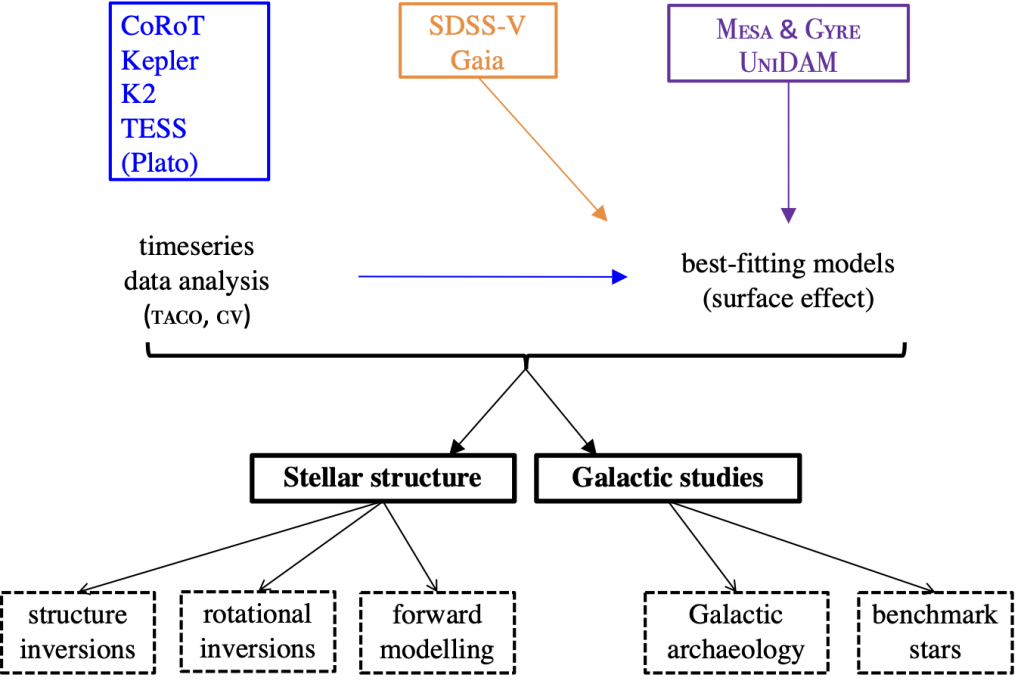Theory and Observations of Stars (TOS)
Stars are an important source of electromagnetic radiation in the universe allowing for studies of many phenomena, from distant galaxies to the interstellar medium and extra-solar planets. However due to their opacity it was once said that “at first sight it would seem that the deep interior of the Sun and stars is less accessible to scientific investigation than any other region of the universe” (Sir Arthur Eddington, 1926). Now, through modern mathematical techniques and high-quality data, it has become possible to probe and study the internal stellar structure directly through global stellar oscillations: a method known as asteroseismology.
Asteroseismology uses techniques similar to helioseismology (the study of the internal structure of the Sun through solar oscillations), to study the structure of other stars. The properties of the oscillation waves propagating through the star are used to trace the internal conditions revealing information that is otherwise hidden by the opaque stellar surface. This asteroseismic information from the CoRoT, Kepler, K2, TESS, SONG and Plato observatories combined with astrometric observations from Gaia, spectroscopic data from the SDSS-V APOGEE, interferometry or photometry and state-of-the-art stellar models such as MESA provides insight into the stellar structure and the physical processes that take place in stars.
Understanding the physical processes that take place in stars and how they change as a function of stellar evolution is the ultimate goal of the Theory and Observations of Stars (TOS) group at HITS which was established in 2020. We focus on, but do not limit ourselves to, low-mass main-sequence stars, subgiants, and red giants. These stars are interesting as they go through a series of internal structure changes. Furthermore, these types of stars are potential hosts of planets or in the case of core helium burning red-giant stars could act as standard candles for galactic studies. Hence, exoplanet studies as well as galactic archaeology will also benefit from an increased understanding of these stars.

The TOS group is an international node of the Stellar Astrophysics Centre (SAC), Aarhus, Denmark.
